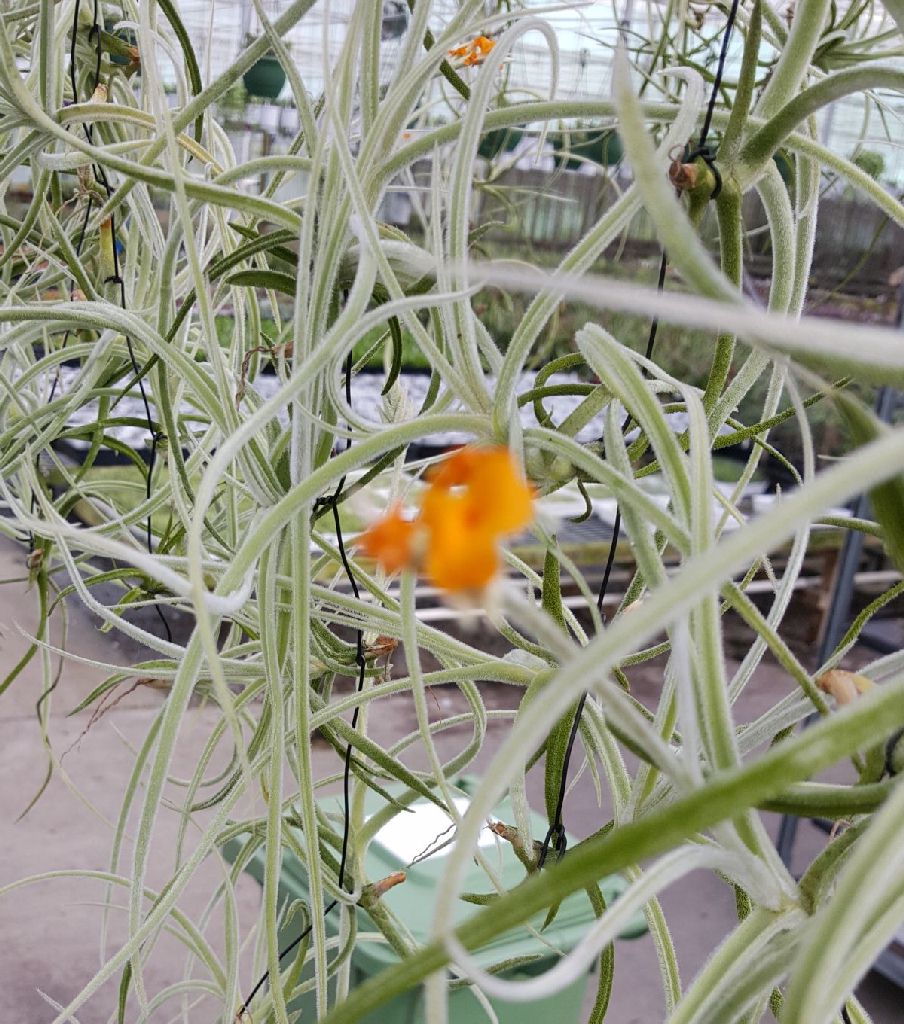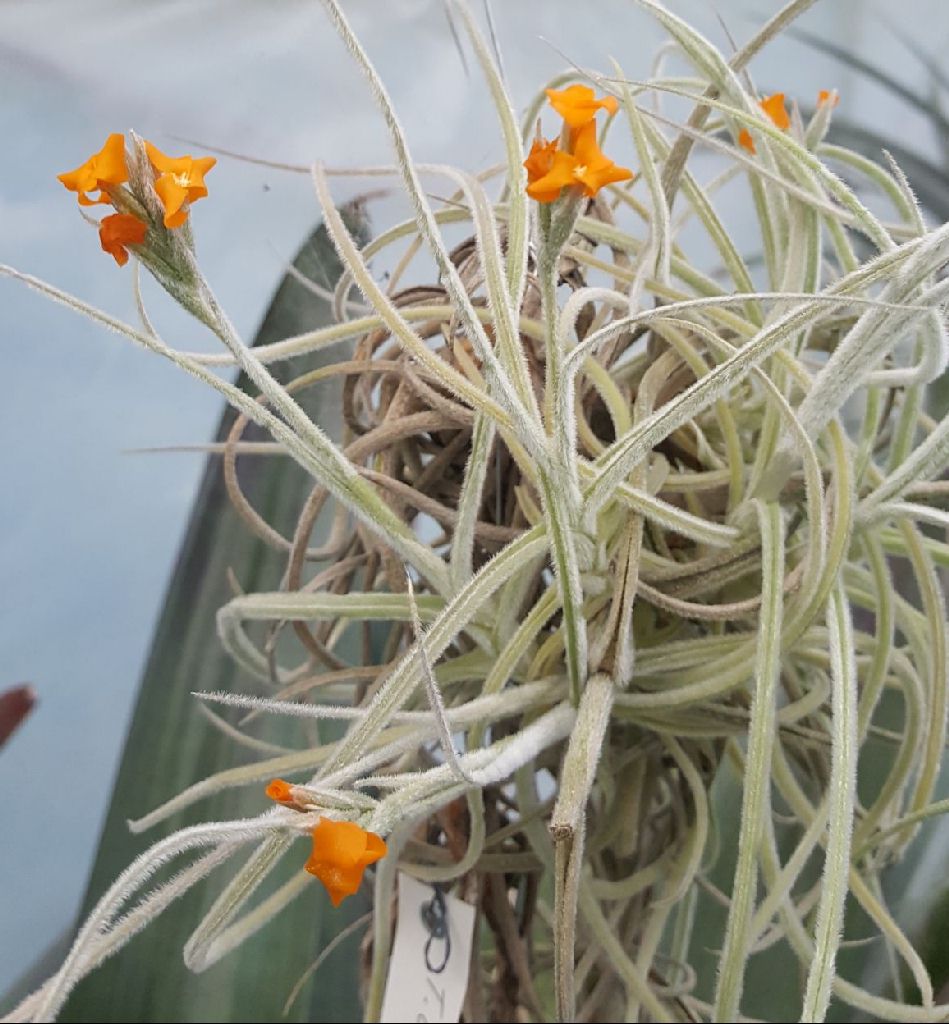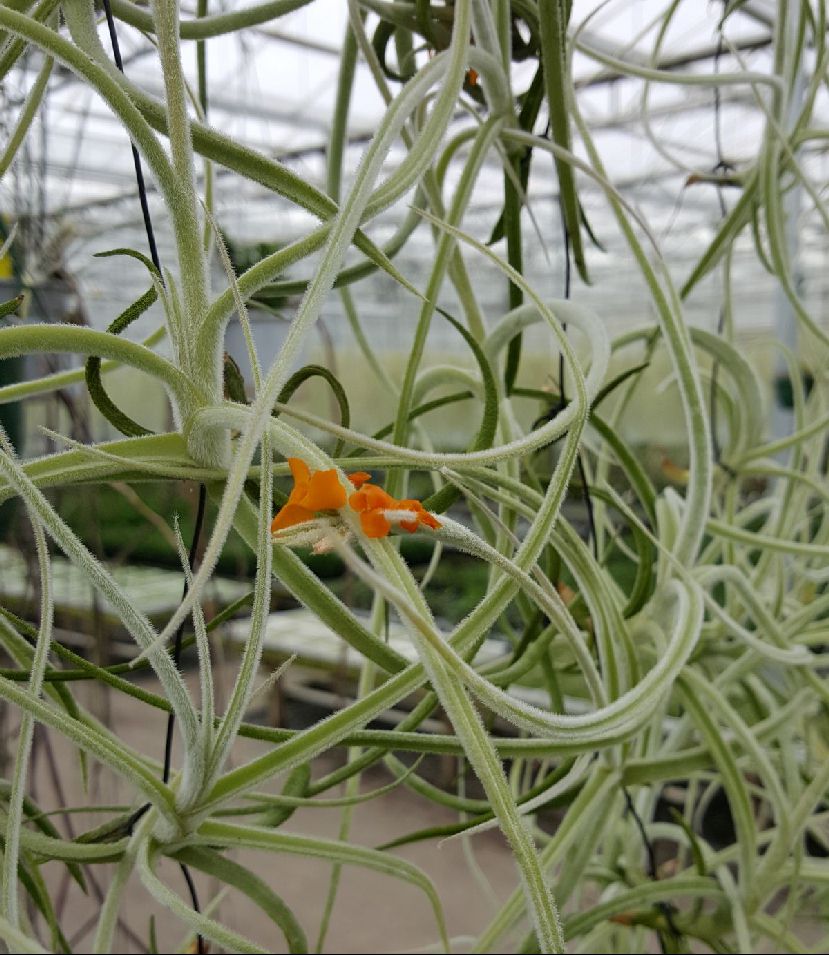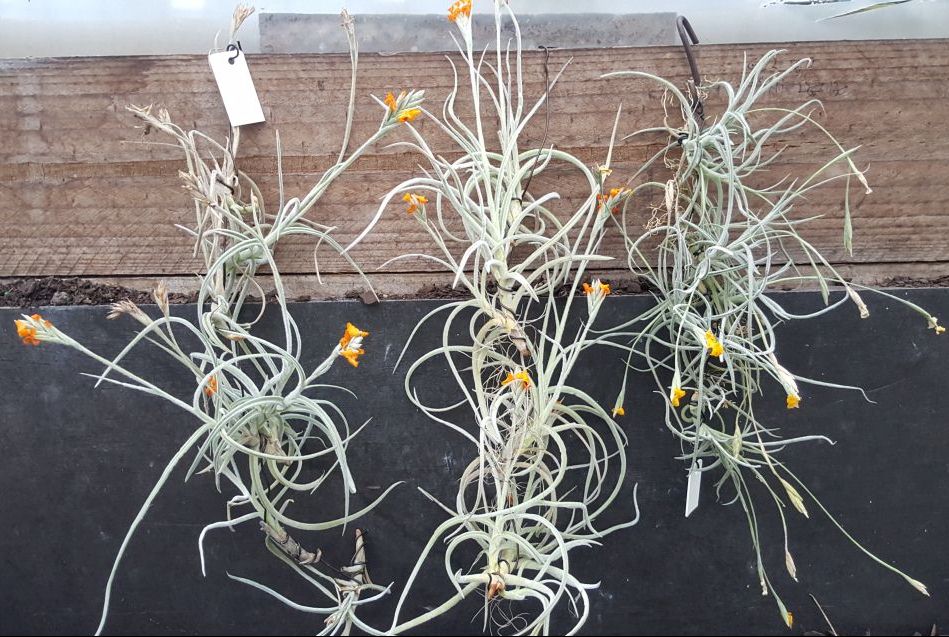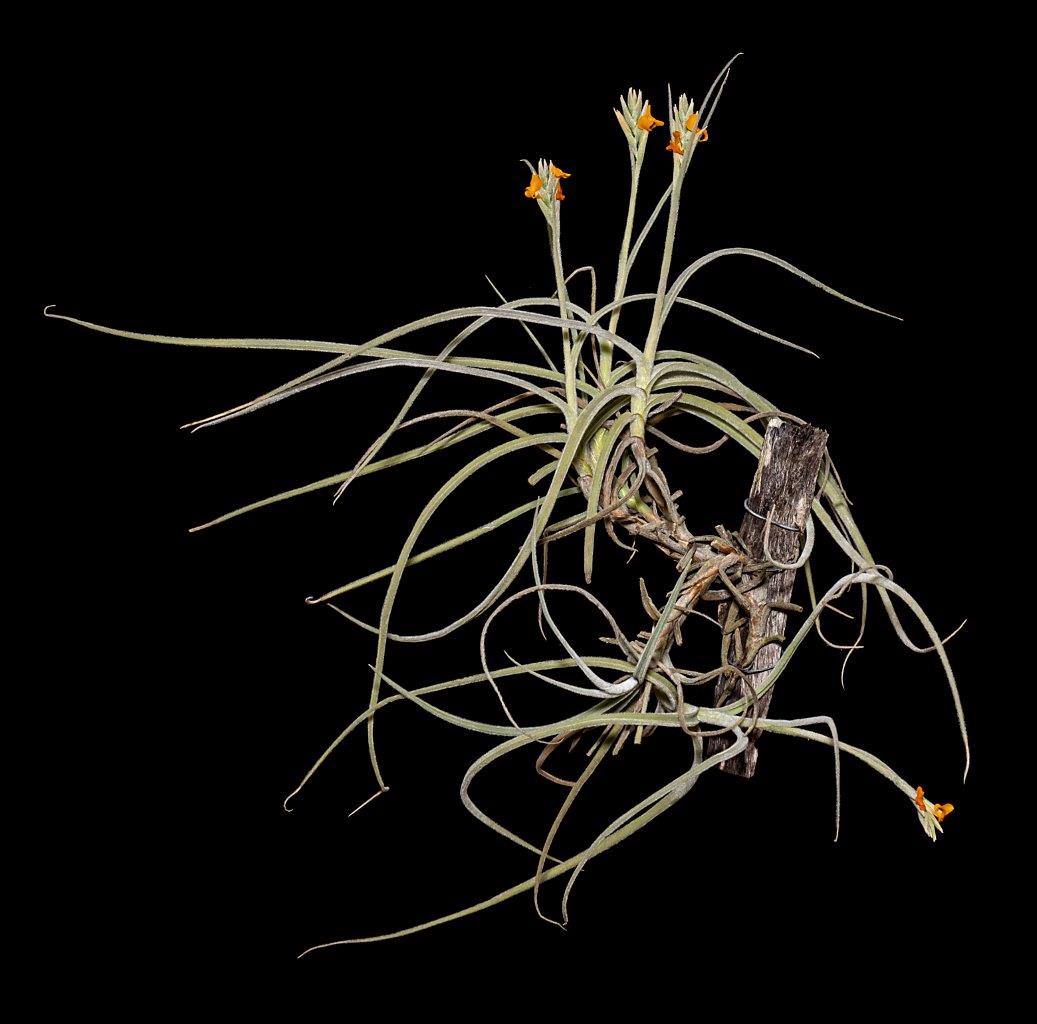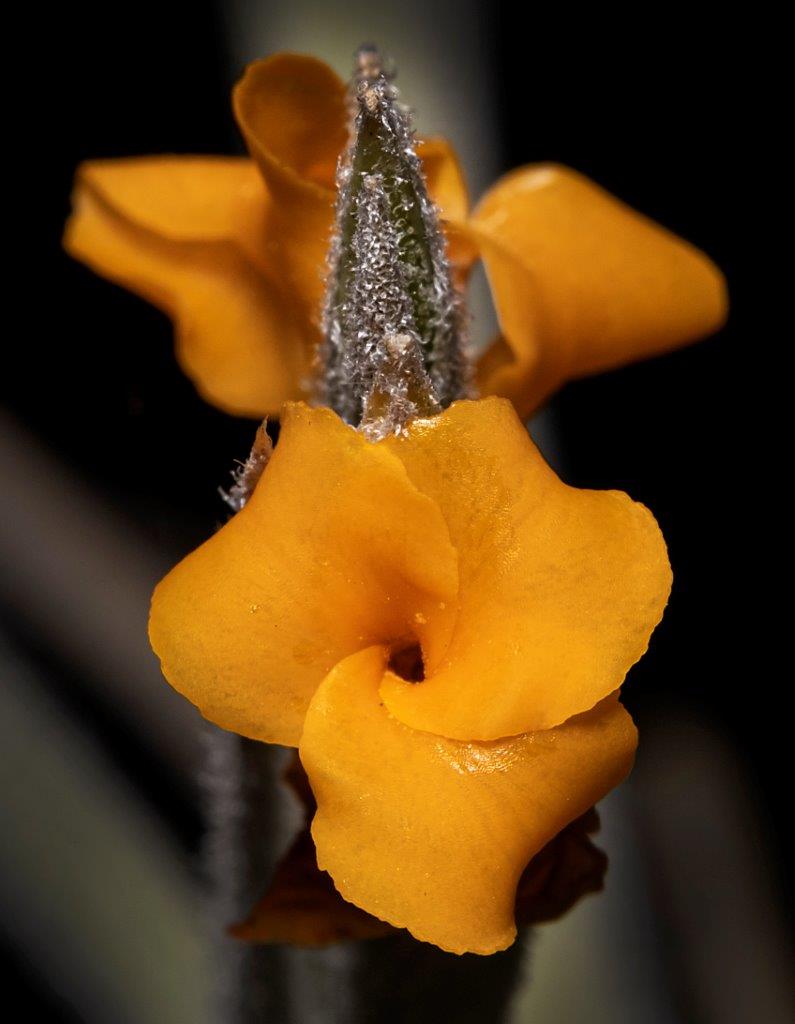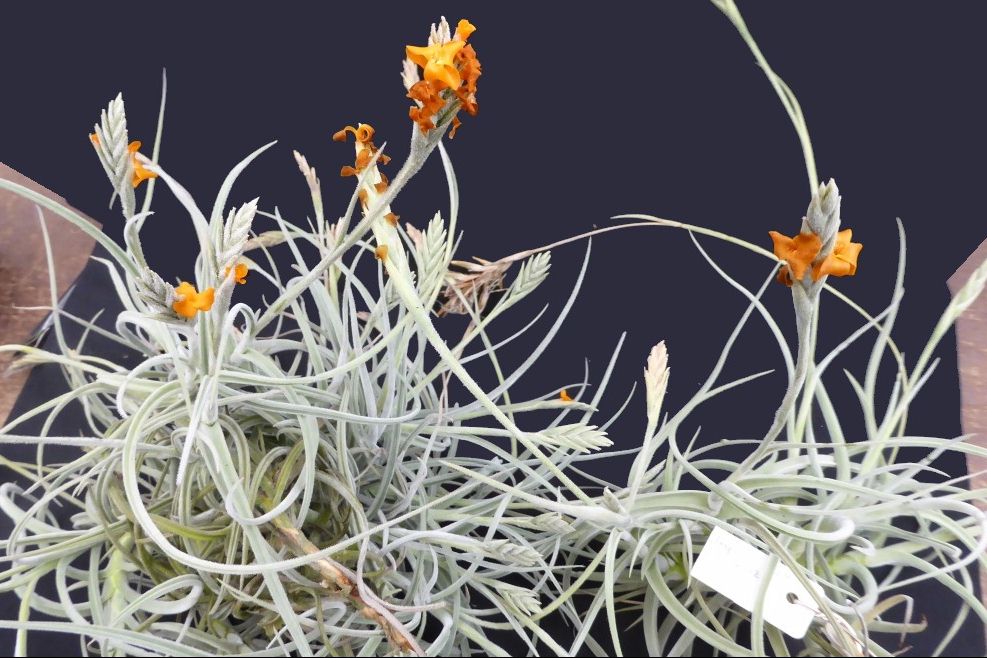

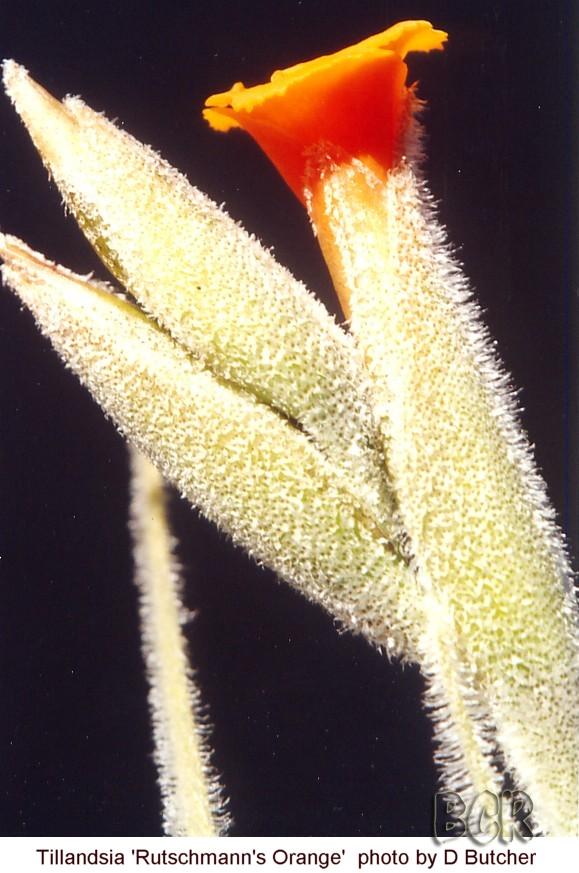
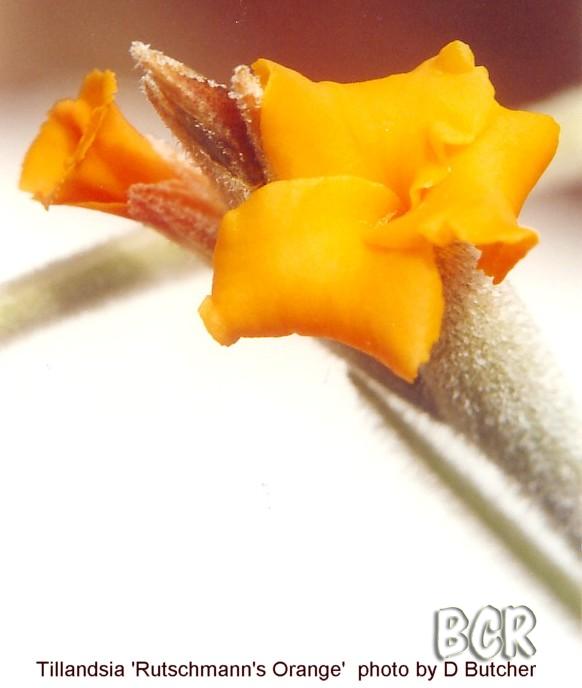
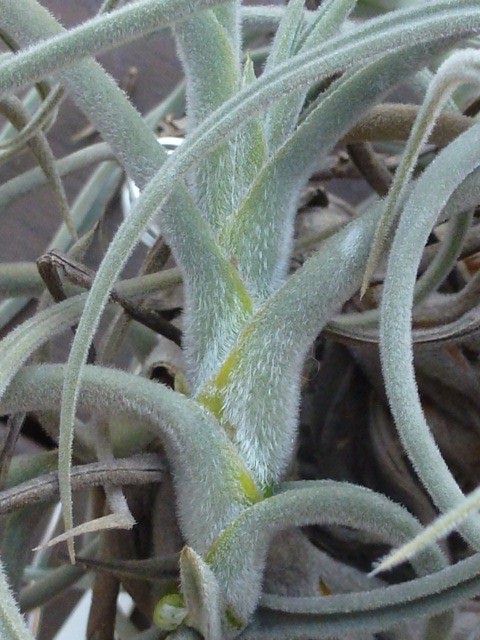
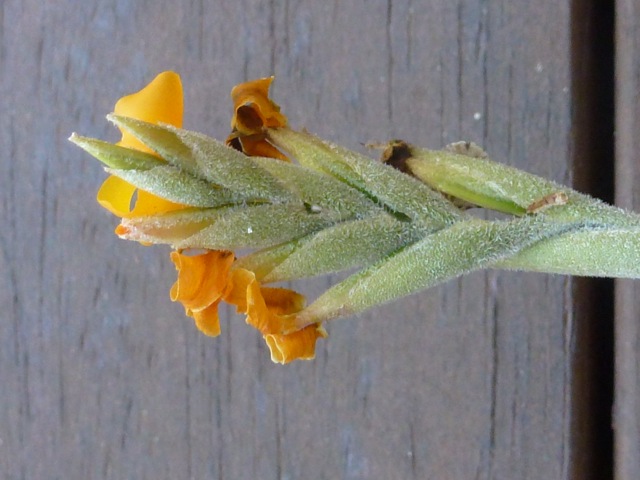

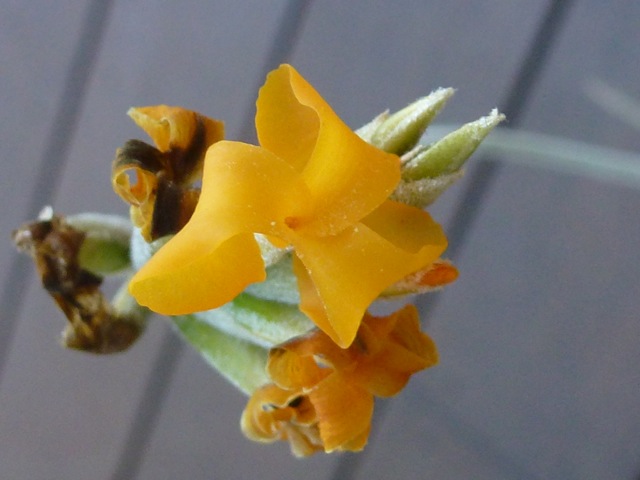

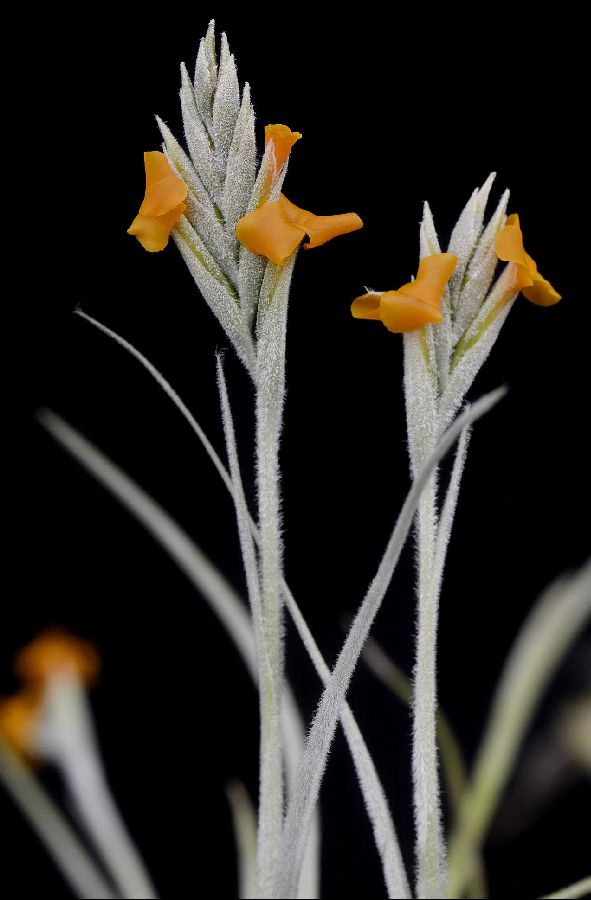
I have had great difficulty getting true colours in the flowers with my little camera. I’ve had to shoot in a variety of light – but these ones I have posted are very very close, if not exact. There are also other lovely distinct forms of caliginosa – one I have is nearly black. Another I collected in Argentina has exceptionally short leaves. I like them.
Bruce Dunstan 30/05/16 see P1060033 above
Hi Chris: Nice informative post. I have wondered about a plant I had as Rutchman's Orange that I got from Peter Tristram years ago and sadly parted company with its label. Looking at the images on the BCR and the trichomes at the leaf bases I'm happy to relabel it as Rutchman's Orange.
Bruce Dunstan 31/05/15
Hi Derek: It will be flowering in a couple of months. I'll take some snaps and we can see then. It seems another larger growing clone though is slightly smaller than Rutchman's Orange. My T. crocata seems to be about half the size of Ruchman's Orange and the Buttercup is midway between the two, if that make sense. I'm hoping Peter Tristram may have some information on source etc. Buttercup on the left and Ruchman's Orange on the right.
Derek Butcher 31/05/2015
Bruce: I can understand the difference between yellow and orange but what Buttercup are you talking about - the Pommie one or the Aussie one? Seems tautology to me.
Bob Hudson 31.05/15
My 2 cents worth: I have 3 different forms of T. crocata 'Orange' they have slightly different shades of Orange and are different in looks.
Peter Tristram 02/06/2015
Hi all, after some crocatas from Holm bloomed buttercup yellow I used that name, assuming a mix of yellow, Ruchman's Orange or caliginosa. The ones from RFI vary and Paul told me they are the German orange x yellow, the grex named Copper Penny. They are large like Ruchman's Orange but can vary from yellow to orange, mostly the latter. T. caliginosa varies from pure light yellow to dark and most forms are spotted.
Derek Butcher 02/06/15
Peter: Where did you find it reported that T. caliginosa can have yellow petals? The very name suggests something muddy and there is also the German Nurseryman's name of T. diabolica to consider.
Playing at hybridising without reporting what has been done causes misconceptions and as Chris says, very few analyse seedling results these days. Thus I suspect a yellow flowering T. caliginosa is a hybrid.
What were the aims of the hybridist in crossing T. crocata forms to produce Copper Penny NN ? Perhaps attempts have been made to cross the green petalled form.
Much data is on the DVD on T. crocata and T. caliginosa but if you have authenticated published data I would be glad to add it.
Chris Larson 02/06/2015
Hi Derek: See #2. T.caliginosa LH#5012. Collected at Tin Tin, Cochabamba, Bolivia. 2300m. The original post contained this plant. Seems yellow to me. Is there doubts on this label?
Also the very dark form (almost black) comes from a German collector that doesn’t grow hybrids to my knowledge. We’ll chase this one down when Peter gets back.
As per that old question of ‘what were they thinking’ when they did this cross: Much of the commercial crossing is to get volume with stronger growth - commonly referred to as hybrid vigor. Or even to get better success rate in germination. There is not only crossing for the look of the plant, but to breed certain growth characteristics into a plant (faster growth, wider climatic tolerances, etc). They might like the style/look of the plant, but want something that is more vigorous in their conditions.
Derek Butcher 02/6/16 see T. caliginosa description, T. crocata Varella1 and T. crocata CU3 pics
Chris: Is this the colour I am to expect with T. crocata. To me I see muddy overtones and Margaret says it has brown spotted edges. Perhaps someone with younger eyes can confirm. As I said, if there is anyone with proof that the detail on the DVD is incorrect I will seek clarification
Peter Tristram 15/06/15 see T. caliginosa, Y Tin Tin x2, T caliginosa Holm06PT x2 pics
Hi Chris, Eric: As far as I know the dark form of caliginosa came from the Fischer collection which was distributed before and during the 2011 Berlin meeting. You came to Berlin with Peter B, Eric.
Attached are a couple of forms of caliginosa, one from Holm when I visited him with Eric in 2006 and the other from Lotte in 2012 which would be the yellow Tin Tin form.
Peter Tristram 21/07/15 see pics above.
It’s crocata blooming time and we are lucky to have quite a few forms in Aussie Land. This orange blooming clump (ex Rutschmann I assume) came from Germany and blooms every year. This year the spikes are mostly shorter than in previous years for some reason but the show is just as attractive. I have been busily crossing it with a variety of duratiis, like Herr Holm has done, as I don’t expect the hybrid will pup much so seed-raising will be the only way to grow some numbers.
Tillandsia crocata ‘Rutschmann’s Orange’ by Derek Butcher 3/2008.
When Werner Rauh described T. crocata var tristis in Trop. Subtrop. Pflanz 43: 17. 1983 he mentioned how variable T. crocata was. At that time T. crocata was considered to be widespread in Brazil, through Argentina to Bolivia. He referred to a very large form collected by Dr J Rutschmann of Basel, Switzerland in the grounds of a hotel in Brazil, and which had a 6-7 flowered inflorescence and fragrant, dark orange flowers.
A year later Walter Till created T. caliginosa in Pl. Syst. Evol. 147: 282. 1984 and treated T. crocata var tristis as a synonym. T. caliginosa coming from Northern Argentina and Southern Bolivia.
The orange flowered T. crocata continued to offset and be grown by European specialists. In fact in 1996 it made its way to Australia as T. crocata ‘Orange’ where it would not offset fast enough to satisfy the demand. In dry Adelaide, Australia, ‘normal’ T. crocata have leaves 7cm long but leaves for ‘Orange’ are 13cm long. Nobody has succeeded in growing self set seed from this plant to prove it is a form of T. crocata and not a hybrid. However, it was collected in Brazil far from the habitat of T. caliginosa so this cannot be considered to be a parent and we are talking about a putative natural hybrid. Because of a man-made hybrid – see below, this clone needs a more specific name like ‘Rutschmann’s Orange’.
In 2004 Doetterer in Germany, was selling T. caliginosa, having obtained his stock from Holm. What is interesting is that a low proportion of these plants do not have the typical glabrous leaf sheath of T. caliginosa nor the typical dark brown petals. In fact they have T. crocata type leaf sheaths and almost orange petals. It would appear that some foreign pollen has crept into the seed raising project. Because of their hybrid origin they should be called ‘Mock Orange’. The problem with identification will be that fact that T. caliginosa also has long leaves which remind me of a live floppy mousetail compared to a dead stiff mousetail of T. myosura. We must remember here, that T. myosura was a ‘confused’ species for over 50 years until Walter Till created T. caliginosa in 1984.
So if you do have a T. caliginosa acting oddly, think of ‘Mock Orange’.
